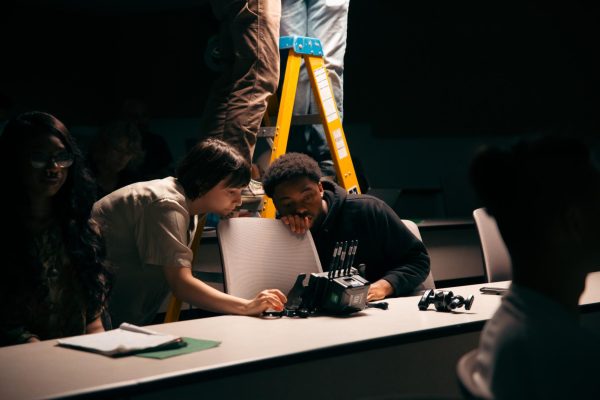Tenure, promotion, hiring policy dominates faculty senate meeting
October 10, 2017
Faculty Senate turned attention to tenure acceptance and promotion policy at its October meeting Monday.
Deborah Smith, the Senate chair and associate professor of philosophy, centered her remarks on clarifying her stance on the plan set forth by Todd Diacon, the senior vice president of Academic Affairs and provost, to merge the process that awards professors tenure with the promotion process.
“Under our current policies, a successful tenure review does not always result in the upward movement of promotion to associate professor,” Smith said. “The two are separate processes governed by separate policies.”
Smith explained while promotion is only possible with tenure, it is possible to gain tenure without getting promoted from adjunct to associate professor.
“At the request of the provost, I have instructed Faculty Senate’s professional standards committee to explore revising our tenure and promotion policies to fully combine the decisions regarding tenure and promotion into associate professor,” Smith said.
Smith said she is in favor of merging the two processes because she worries that by awarding a professor tenure without promotion, it lets colleagues vote someone into tenure while still expressing concerns with their qualifications for the title, putting faculty in a “gray area” of potentially undeserved tenure.
“I believe that too often we decide to tenure, but not promote faculty who may come close to meeting, but not clearly meet, the criteria for tenure,” Smith said.
Smith said she hopes to raise the bar for tenure and promotion by merging the two processes, but worries the result will be the opposite.
“We will effectively be raising the bar, ever so slightly for tenure, and ensuring tenure is never awarded as a sort of consolation prize,” Smith said. “My fear is that we will effectively be lowering the bar for promotion to associate professor.”
George Garrison, the acting academic chair of the department of Pan-African Studies and faculty senator, later expressed different fears. He sees prioritizing tenure, an accomplishment based predominantly on research accolades, as a disservice to students.
“We do pride ourselves on being a liberal arts institution here, where we do think teaching is important,” Garrison said. “But we have a tendency (to think) — that’s not a proven idea — that (scholarly advancement) results in excellent teaching. And most of us, who have been around a considerable amount of time, have come across, fairly often, very senior people who are not necessarily good teachers.”
Diacon briefly touched on tenure and promotion policy before moving to the ongoing policy regarding the faculty early separation plan, which provides a contract buyout for faculty members of retirement age to open up funding to bring in new tenure-track faculty members.
The estimation from Diacon is, for every two faculty members who accept the early release offer, three new tenure-track assistant professors will be brought in.
He also clarified a concern of some of the faculty: the ability to return and teach after accepting the early release offer.
Separating professors will be able to return to teach one course each fall, spring and summer semester as an adjunct professor.
“Yes, separating faculty may return and teach for Kent State University,” Diacon said. “But, each time they do so, that will delay by that amount of time, the payment into the separation benefit.”
Retirees through this plan will still retain retirement health benefits, and will have the option to delay retirement for up to one year.
“For example, if a professor has external funding and wants to continue that work, delaying the (separation) plan would be a distinct possibility,” Diacon said.
After explaining the hiring process that will take place going forward, which involves the confirmation of hiring by Diacon and President Beverly Warren based on proposals from department deans’ recommendations, the Comprehensive Office Print Initiative (COPI) was broken down and discussed.
“We are exploring how we can rethink our purchasing, use and placement of office copy machines as well as desktop printers,” Diacon said.
COPI will lead to a reduction of total printers in each department, with the university also backing away from paying for ink cartridges for personal desktop printers, instead leaving that expense to faculty members.
Mark Polatajko, the senior vice president of finance and administration, said the university is projected to save $400,000 at minimum with COPI and “all of those savings at the colleges or centers are retained by those colleges and centers.”
The COPI program guidelines explain along with the reduction of university investment on personal printers for faculty, savings will come from a few default settings that will be set for all department printers. The settings include printing in black and white, with an option to print in color, printing pages double-sided and going into power saver mode when they aren’t being used.
“The process will basically involve a comprehensive review of every square foot of space that is serviced by a variety of print devices,” Polatajko said.
The review will break down the exact needs for each department and create the most efficient system possible based on those needs, including the ability to safely print private documents on public printers through a personal identification system.
The university administration expects COPI to be fully in place in 12 to 18 months.
Faculty Senate will meet next on Nov. 13.
Nick Hunter is the academic affairs reporter. Contact him at [email protected].























